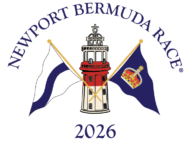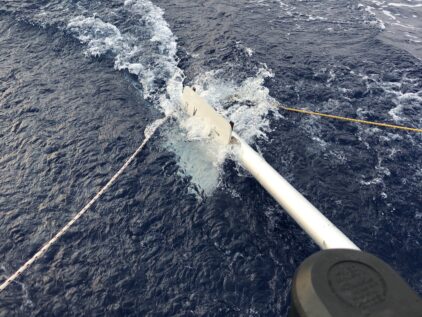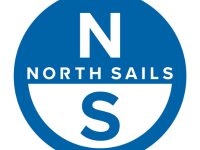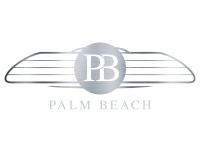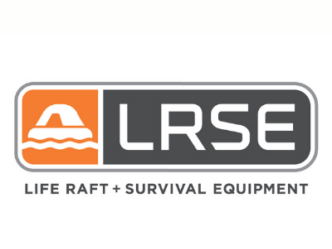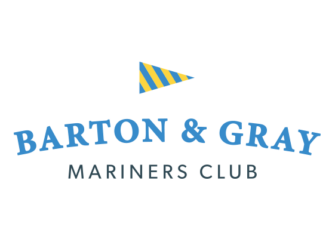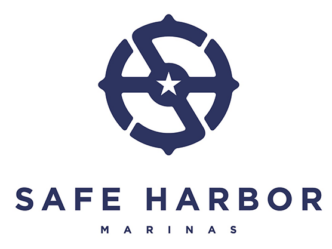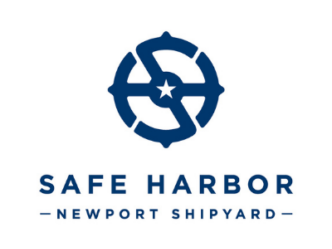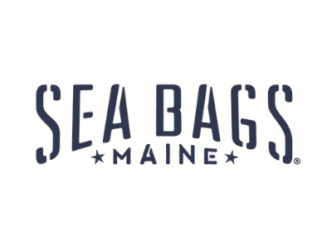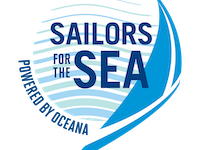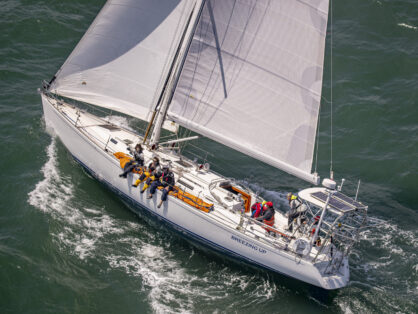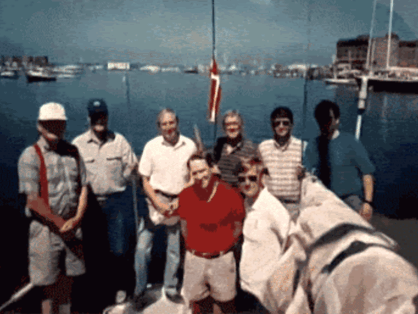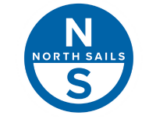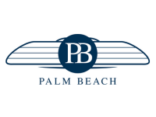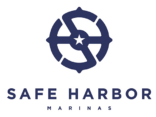A broken rudder left Bailiwick's crew out of the race and with an even bigger challenge, to steer the 40-foot sloop to safety in Bermuda. Photos & video included. By Chris Museler
No amount of inspections could have helped prevent what happened to the Blue Jacket 40 Bailiwick late Tuesday night during the 2018 Newport Bermuda Race. The team was finally released into the strong 20-knot reaching conditions they had hoped for, when Carol Tobian suddenly lost steerage.
With two reefs in the main and a 100 percent jib, Bailiwick continued reaching along at eight to nine knots but Tobian was free spinning the wheel. “I asked, ‘Are you sure?’” watch captain Steve Burton told us. “When I saw the wheel spin, that’s when I called ‘All hands.’” The carbon-fiber rudder post had broken where it exits the hull, and the rudder was gone.
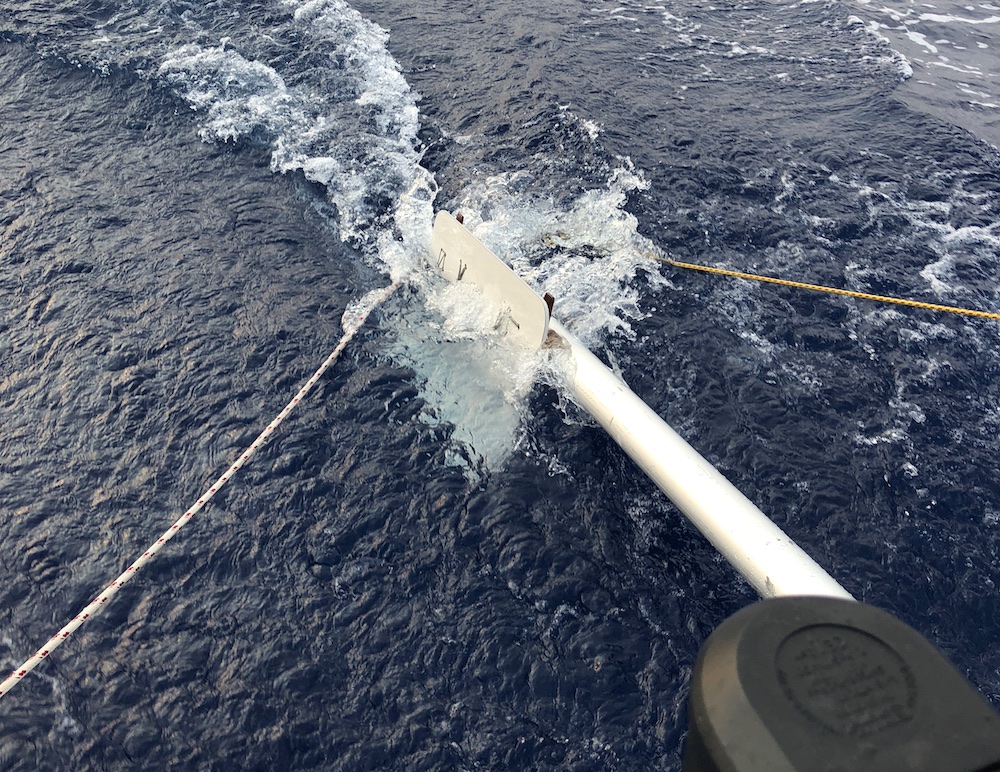
Sailors in the Bermuda Race study responses to breakages at sea, how to jury rig masts, improvise rudders, repair fittings, even address medical injuries and system fixes. But it usually never plays out the way the book says or the way the instructor showed you. By the time Bailiwick was safely shepherded to the Customs quay in St. George’s Harbour about 30 hours after the incident, the crew had discovered flaws in some previously proven responses to a rudder loss and created solutions that will be studied and shared in the future.
Here’s the chronology of events and lessons learned by the crew of five, as told by skipper Roger Echols and Steve Burton.
“Everybody heard this loud bang, like a shotgun,” recalled Echols, who purchased the Tim Jackett design from Island Packet in 2013. “It was sudden and instantaneous.” But the boat kept sailing in a straight line for more than 30 seconds.
Echols immediately checked the steering cables and quadrant compartment. All was connected and there was no water below.
Echols called the race committee on the satellite phone and Burton issued a “Securite” on the VHF but there was no response. Their AIS had been spotty and they had previously had been able to communicate with boats around them.

“The real life saver was the satphone,” said Burton, who had sailed in several races to Bermuda with three of the other crew. “The Rescue Coordination Center in Bermuda, the race committee and Jonathan Brewin [chairman of the Bermuda Race Organizing Committee] were fantastic.”
The race’s Emergency Management Plan, which is always tested in Newport before the race begins, kicked into gear. “That’s our bible,” said Brewin.
Tethers attached, the crew took sails down. Joyce Sellon was on the cabin top in the pitching seas, throwing a sail tie around the main when she slipped and fell until she hit the lifeline and was bounced back into the boat. Bruised badly, she was brought below and stabilized.
There were 100 miles to go in the race, but finishing was the last thing on Echols’ mind.
Drogue Steering
The crew deployed a Galerider drogue as they had practiced before the race, but the conditions were dramatically different. The boat held its broad reach course, slowly motoring, but the drogue’s swivel couldn’t prevent it from spinning. In the following seas, the bridle was twisting and the drogue came closer and closer until the transom was lifting and landing on the leeward bridle line.
After more than an hour of recovering and untangling, they deployed the drogue again, and again it spun up to the boat. Then, as the bridle line was being retrieved, with the engine in neutral, a series of large, quartering waves lifted and settled the transom over the line and it twisted around the propeller.
“We were so disappointed,” said Burton. “We had practiced it, but not long enough to see the pinwheeling. It didn’t work, and I don’t know why.”
Navigator Mark Gervais donned mask and snorkel at first light on Wednesday, put on a harness, and was eased into the rough water as the boat rolled. He saw the break, clean at the hull. After several deep breaths, he cut away the tangled line and the sailors regrouped.
Tiller for a Pole Rudder
The next solution was a whisker pole with a board attached to it to act as a rudder. Although the emergency tiller was no good for steering, with the rudder gone, Burton chose to use it as a pivot point and steering arm for the pole.

With an open transom, the crew saw the opportunity to use the emergency tiller in concert with the pole. A three-quarter-inch, one-foot by two-foot bulkhead panel was the rudder surface (dimensions approximate). There were three connections that needed to be executed under extreme load for this system to work: the board to the end of the pole; the pole to the vertical tiller post; and the pole to the horizontal tiller.
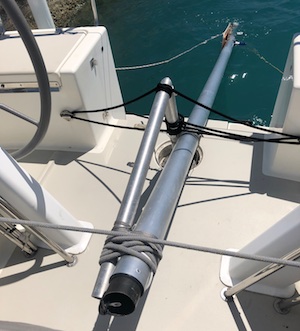
Burton said they used two guy lines were rigged from the end of the pole to the quarters of the hull. “The torque was phenomenal,” he said. The guy lines took the pressure off the rig when a quartering sea would hit the rudder.
With an electric drill, the crew drilled through the panel and the pole. They happened to have a spool of thin Dyneema left over from a netting repair and Burton said that line and the drill were life savers.
The panel was first lashed to the pole. Then a screwdriver was fitted through the panel and pole, and lashed in place to prevent the panel from twisting around the pole.
Then the same process helped affix the pole to the vertical post of the tiller. Again lashed, then a screwdriver was set through the pole and tiller to prevent twisting. This left the panel slightly angled and it slewed around like a sculling oar. The boat steered straight but yawed a lot.
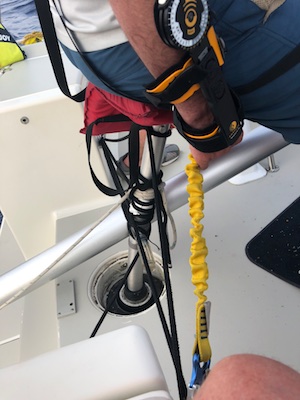
After a few hours and 15 to 20 miles, the crew stopped to make adjustments to the system, as described by Burton:
"We realigned the rudder and drilled new holes for the screw driver and added a second screw driver to provide additional stability for the rudder to remain properly aligned. For the screw driver on the emergency rudder-post extension, we needed to drill another hole to allow for the screwdriver to pass all the way through the whisker pole. This would prevent the whisker pole from rotating. Our drill bit was not long enough to go all the way through the rudder post extension and whisker pole so we had to drill a hole from the opposite side, which is (to say the least) difficult. Our drill bits were getting dull and with crew helping sight the drill bit alignment, we aligned as best as possible from the opposite side."
“By the grace of God, we hit it right on,” said Echols.
"Once these modifications were made," said Burton, "we were able to steer a much more consistent and direct course for Bermuda, adjusting steerage via the winches in quarter-inch and half-inch increments."
Rudder version 2.0 held, but there was one more problem. The lifting of the buoyant pole with each wave was levering up the emergency tiller. Burton feared either the base of the tiller would sheer off, disabling the system, or worse, break the rudder bearing and start a leak. The solution: ride the tiller.
For the last 90 miles, the crew took turns sitting on the emergency tiller to keep it down. “Punch drunk,” with sore rumps and hands, they reached Kitchen Shoals around midnight, where Bermuda Yacht Services' Captain Sloan Wakefield picked up their tow line and “deposited us with the most exquisite precision at the customs dock,” said Echols. “And Jonathan Brewin was there to meet us. It was amazing how he got Customs to meet us at 4 a.m.”
Lessons Learned
Bailiwick will be sitting in St. George’s for several weeks until Echols and Island Packet come up with a solution for a new rudder. They are considering a stainless steel rudder stock, as used in other boats built by Island Packet. For now, the crew are happy to have succeeded in what turned out to be their only goal, arriving in port safely.
“I was never concerned about the boat,” said Echols. “It was our platform. Within a minute or so, I knew we were fine and floating beautifully.”
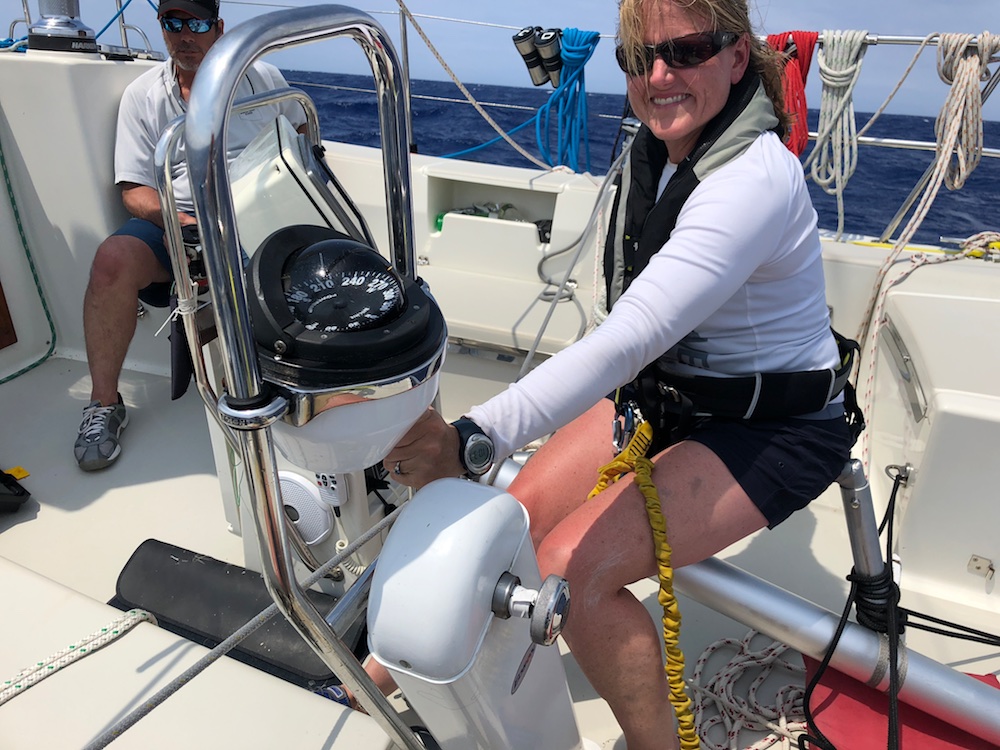
Echols and Burton felt strongly about a few lessons learned. Here’s what they wanted to share:
-Have more than one backup steering system. In this case, a drogue was used and then a combination of whisker pole and emergency tiller.
-Large hose clamps and U bolts were missing from Bailiwick’s repair kit and would have sped up the manufacturing process.
-The steering system would not have worked without the ability to use an electric drill to prepare attachment points for lashings and screwdrivers.
-Carry plenty of screwdrivers. They were lucky to have so many and they were integral in keeping the steering system in line.
-Harnesses and tethers were crucial. From saving a falling crewmember to simply keeping everyone else aboard, Burton said harnesses were everything for their safety. As he said, “If someone fell overboard, we wouldn’t have been able to turn around. They’d be gone.” They were tired and had to be vigilant to make sure all crew were clipped in at all times.
-“Lash-It” Dyneema, and lots of it, also made this system work, keeping parts together under load. It was a happy accident that an entire spool was left on the boat before the start.
Echols also felt it was important to emphasize how precarious the whole system was when we had it in good working order. "The stresses on the system were tremendous," he said, "as evidenced by the 25 degree bend in the auxiliary tiller post and the variance in the direction we were heading was often 60 degrees or more. It took two to three people to manage the steerage at all times. Fortunately we had sufficient fuel to motor to Bermuda where we received the tow into St George's Harbour."
Echols had a final comment when asked if there was ever a moment where he was worried to the point of anxiety. “From the moment we called the race office, Jonathan Brewin checked in on us every two hours,” said Echols, a veteran of the Marblehead to Halifax Race. “We were confident we were being well watched. We never felt lost or abandoned.
Having seen Bailiwick safely at the dock, Race Chairman Brewin said: “I was clearly delighted to meet the crew at the dock, having observed their tremendous seamanship over the previous 24 hours. Particular thanks must go to the smooth professional support of Denis Rowe and his team at the Bermuda Rescue Communications Centre and to Chris McNally and the race’s Fleet Communications Office in Newport. I am extremely grateful, as well, to HM Customs for opening their office in St. George’s early to allow clearance of the vessel and enable a very tired crew to get to sleep.”
Editor's note: In 2014, Wandrian broke a rudder bearing 300 miles out, made a temporary repair, and made their way slowly to Bermuda, escorted by another competitor, the yawl Black Watch.
